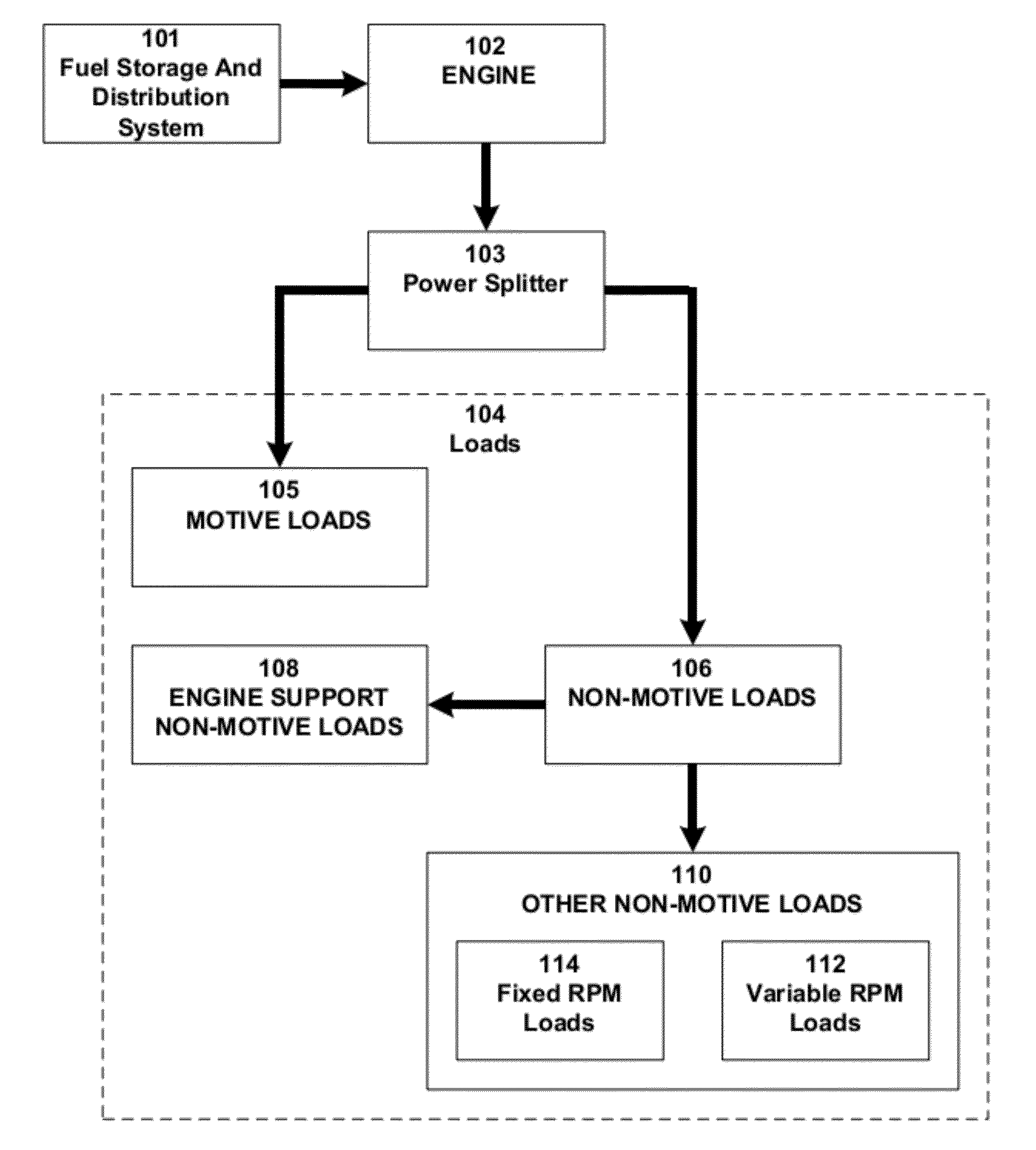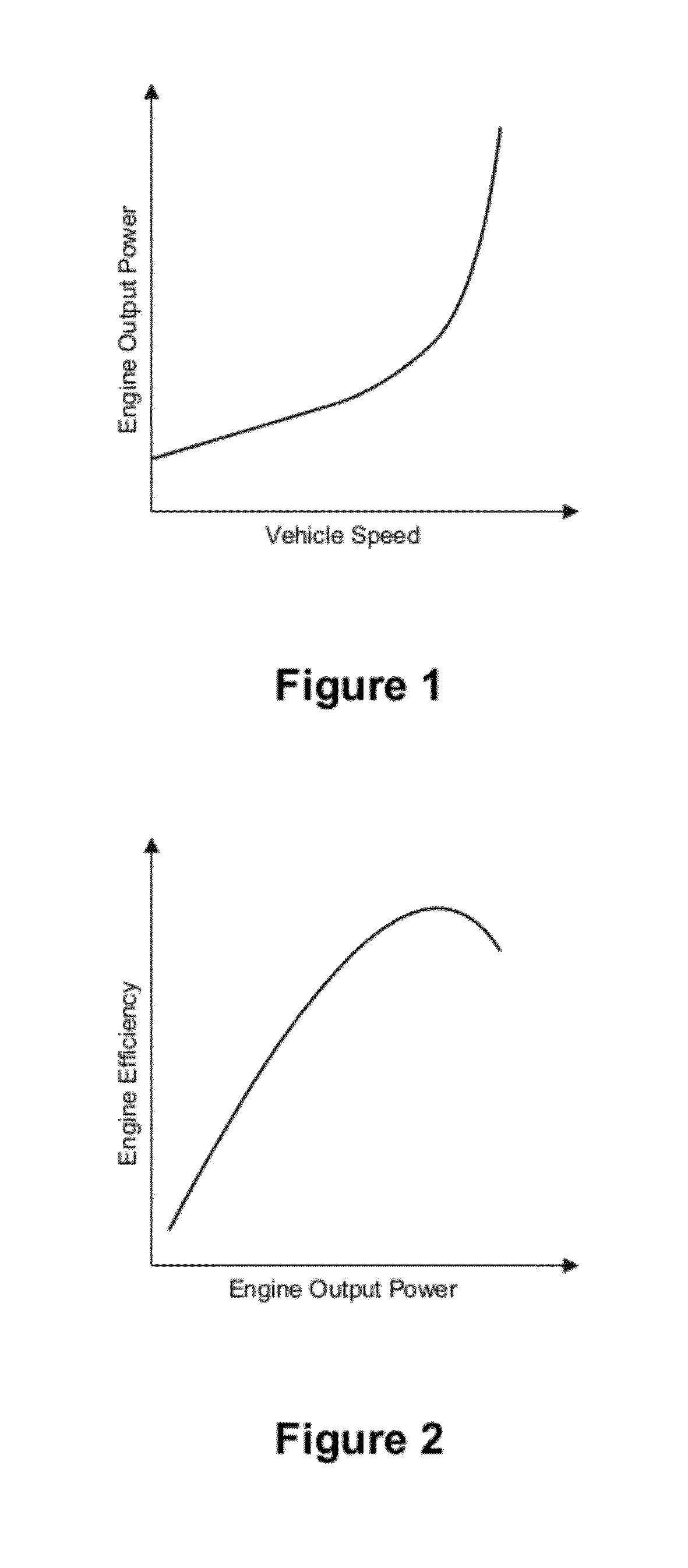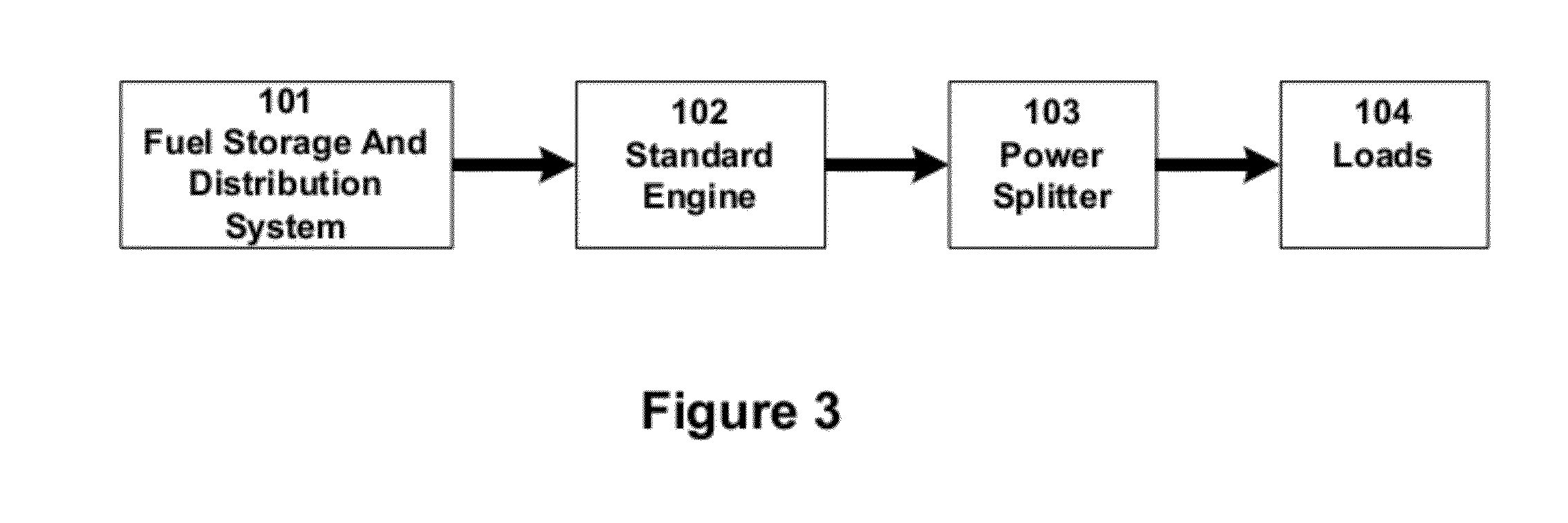Efficient vehicle power systems
a technology of efficient vehicle power system and power supply, applied in the direction of electric propulsion mounting, propulsion by batteries/cells, jet propulsion mounting, etc., can solve the problems of increasing engine output power, reducing vehicle fuel economy, and low fuel efficiency of such engines, and achieve the effect of reducing siz
- Summary
- Abstract
- Description
- Claims
- Application Information
AI Technical Summary
Benefits of technology
Problems solved by technology
Method used
Image
Examples
Embodiment Construction
[0063]The detailed description set forth below, or elsewhere herein, including any charts, tables, or figures, is intended as a description of presently-preferred embodiments of the invention and is not intended to represent the only forms in which the present invention may be constructed or utilized, nor is it intended to limit the scope of any claims based thereon.
[0064]In the following description various exemplary implementations, aspects and characteristics are discussed as directed toward vehicular and particularly automotive applications. The focus on automotive applications is not intended to be, nor should it act as, a limitation to the scope of this disclosure, marine, and air vehicles may also benefit from the disclosure. Automotive also includes automobiles and light duty trucks (terrestrial vehicles), which at present most frequently use single, gasoline burning, ICE power systems to provide power to produce vehicle motion and to operate all vehicle auxiliary and suppor...
PUM
 Login to View More
Login to View More Abstract
Description
Claims
Application Information
 Login to View More
Login to View More - R&D
- Intellectual Property
- Life Sciences
- Materials
- Tech Scout
- Unparalleled Data Quality
- Higher Quality Content
- 60% Fewer Hallucinations
Browse by: Latest US Patents, China's latest patents, Technical Efficacy Thesaurus, Application Domain, Technology Topic, Popular Technical Reports.
© 2025 PatSnap. All rights reserved.Legal|Privacy policy|Modern Slavery Act Transparency Statement|Sitemap|About US| Contact US: help@patsnap.com



